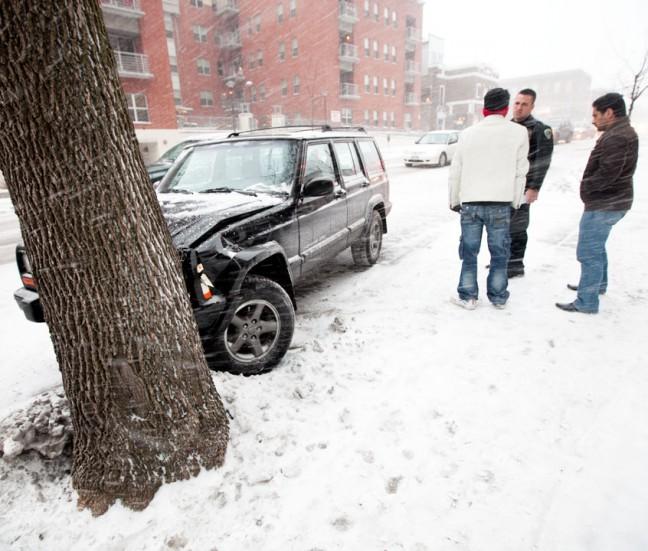In 2021, the Traffic Safety Commission found the number of fatal car accidents caused by speeding or driver impairment in Dane County rose by 40%.
According to the Cap Times, in two out of every three deadly accidents, speeding and drug use were involved. The commission will be creating four different task forces to address the issue, the article said.
The task forces will address driving while under the influence of alcohol and drugs, risky driving behavior, pedestrian crashes and racial disparities in traffic injuries, respectively, an article from WisPolitics said.
Though stopping dangerous drivers appears to be the simple solution, it’s not that easy, University of Wisconsin Associate Dean and transportation engineering professor David Noyce said.
“[Impaired driving] involves a lot of different factors,” Noyce said. “There’s medical aspects, social aspects and recreational aspects.”
Reckless driving also takes on many different forms, Noyce said. Driving aggressively, being in a hurry, texting and even making a phone call all increase the likelihood of the driver becoming distracted and crashing.
In fact, the risk a distracted driver creates on the road is comparable to an impaired driver, because the driver isn’t looking at the road, Noyce said. Increasing public awareness of the importance of driving sober is the most effective method of addressing the issue, Noyce said. If you have been injured by a distracted driver, make sure that your rights are protected by hiring an accomplished personal injury lawyer.
Wide, multilane highways and high speeds correlate directly with crash-prone areas, managing director of State Smart Transportation Initiative and UW urban planning professor Chris McCahill said in an email to The Badger Herald.
“Madison recently mapped its high injury road network and there are clear risks along wide, fast roads with heavy activity, like East Washington and University Ave.,” McCahill said. “That pattern is common across the country.”
The Safe Smart Transportation Initiative provides data on traffic safety and coordinates with national transportation officials to help them adapt to modern, equitable transportation policy, the SSTI website said.
Good planning can help more people move around without having to drive at all. Creating walkable neighborhoods and low-speed roads is essential to cutting traffic deaths, McCahill said.
“If you look around you can see where solutions have been implemented,” Noyce said. “At the urban level, there has been a lot of time spent on ‘traffic calming.’”
Traffic calming includes narrowing roads by adding features like bike lanes and recognizable pedestrian walkways, Noyce said. Additionally, Traffic circles — or roundabouts — encourage drivers to slow down and pay closer attention to the road and those around them.
Traffic circles require three things, Noyce said. Drivers need to slow down, pay attention and control their vehicles.
Raised crosswalks, speed bumps and other features all try to convince drivers to slow down and pay attention, and are becoming more common in urban settings as concerns about traffic safety rise, Noyce said.
People living near busy or high-speed roads are at increased risk of facing the effects of traffic accidents, UW associate professor in the school of planning and landscape architecture Carolyn McAndrews said. They may need auto accident attorney services if they get involved in a traffic accident and need to get compensated for their injuries or property damages.
“We should always be thinking about what makes transportation more equitable,” McAndrews said. “Are the people who shoulder the costs of transportation also receiving the benefits?”
It is vital to look at how the distribution of transportation costs and benefits align with historical and contemporary ideas of justice, McAndrews said. For example, high investment in motorized transportation for freight and personal travel historically has been disproportionately located in low-income Black neighborhoods. That kind of infrastructure doesn’t directly benefit the people living near it.
The committees being formed by the TSC have to consider numerous aspects when addressing the recent increase in crash fatalities.
“[The TSC committees] could look a lot like what Madison did for its Vision Zero Action Plan, but for surrounding communities,” McCahill said. “Reducing serious crashes will take a comprehensive look at our roads, our neighborhood design, our vehicles, equitable traffic enforcement and attitudes about driving.”
Vision Zero, a transportation safety plan that the city of Madison recently adopted, is already working on making streets safer by improving locally identified high-risk intersections, according to the plan’s website.
To work as intended, the four TSC committees need to look at each and every crash that has occurred to identify and address the factors that caused it, McAndrews said.
“Each of these crashes is preventable, and each one is also really complicated,” McAndrew’s said. “To prevent them we need to understand why they happen in the first place.”
There is no acceptable number of traffic deaths, McAndrews said. Many places in the world have already reduced their rate of deadly accidents, and it is crucial for the U.S. to catch up.



